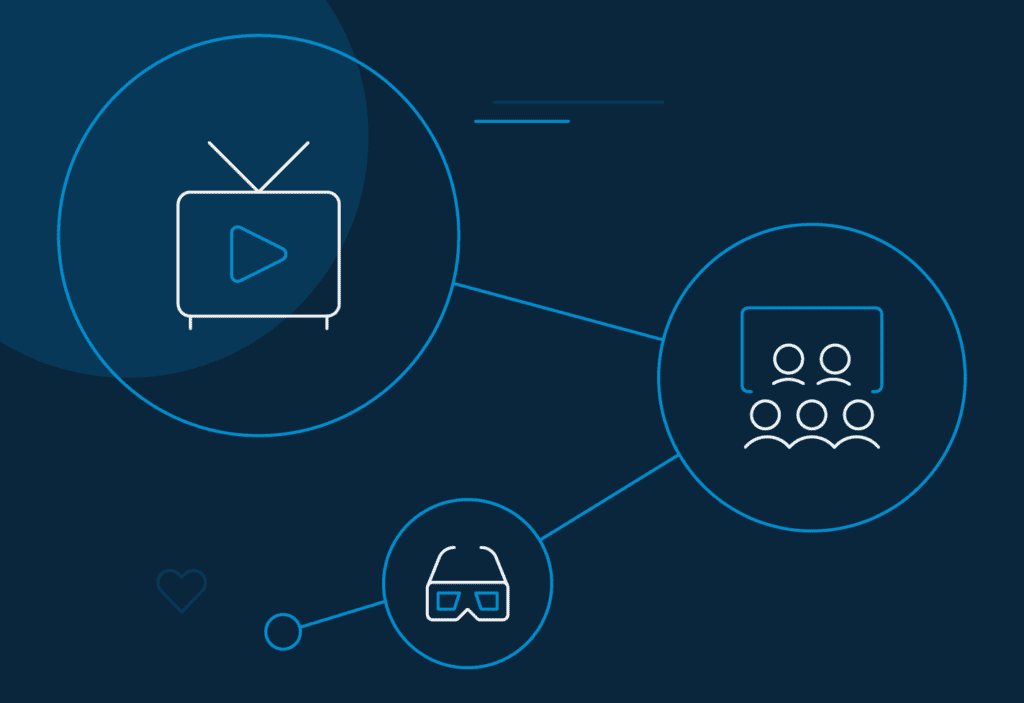A video streaming service provides on-demand access to television programs, movies, and other streaming materials. These platforms offer an affordable alternative to cable and satellite on-demand service.
Streaming services demand payment, either per watch or through a subscription. Videos often originate from a network that is in the cloud. The pricing, availability, and content of services vary depending on the place.
Some services provide extensive hardware support for various devices, such as smart TVs, media streaming receivers, PCs, tablets, and smartphones. Others may be restricted in the types of devices they support or may be specialized to certain operating systems. Other services are also ad-supported or operate on a premium basis and charge for select full-length films.
OTT is an abbreviation for Over-the-Top, which describes the new means of delivering film and television programming through the internet to various devices without the need for conventional broadcast, cable, or satellite pay-TV providers. OTT streaming involves paying an internet provider for internet access to watch without paying for cable TV.
Accessibility is one of the many reasons OTT is so popular. Customers require only a high-speed internet connection and a device that supports applications or web browsers to watch OTT content. A user may access OTT platforms through their computer, phone, tablet, smart TV, or game console, among other devices. It does not require a TV service provider subscription. However, depending on the OTT platform, a person may need an OTT platform subscription.
Some OTT platforms do not charge users membership fees. Instead, they generate income by displaying advertisements to their viewers while they watch the content or by providing reduced-cost subscriptions with minimal commercials.
Amidst the popularity of online entertainment and streaming services, identity is an essential aspect of the digital environment. A brand must prioritize security and privacy to ensure its reputation is protected. Thus, streaming applications must be able to implement the necessary limitations to safeguard the platform and its users.
Some streaming services provide suggestions on the home screen based on the genre fans binge-watch. This is where AI comes into play for a smooth client experience.
However, it is important to remember that hackers are capable programmers who can use flawed algorithms to lead customers to other payment sites. This makes it important for companies to ensure that thirst platform authenticates users using a comprehensive security solution.
In contrast, those that practice the proper cybersecurity precautions and invest in the appropriate identity management system will gain a competitive advantage. The overwhelming bulk of credential-stuffing assaults is carried out through botnets. Typically, hackers design botnets to develop account takeovers of the most sensitive customer data.
Using multifactor authentication can significantly reduce these dangers. Users attempting authentication must verify that they are humans using a web browser. For instance, during the Recaptcha assessment, the clicking pattern or mouse movement may distinguish between a bot and a person.
If customers have difficulty remembering complicated passwords, platforms can use passwordless authentication. This method will allow user validation using OTP, magic links, or biometrics more efficiently and safely. It will secure client data without hindering the user experience.
Streaming services’ popularity makes them more prone to hacking or fake users using stolen login credentials. Credential stuffing is an automated account takeover (ATO) attack that uses stolen usernames and passwords to obtain unauthorized access to user accounts.
To prevent hacking, fraud, and other unlawful acts, replace password credentials with mobile biometric technology that employs anti-spoofing capabilities. A passwordless login expedites operations and minimizes friction. Businesses may also combine an intrinsic authentication ID factor with a possession factor to secure that only the company’s approved equipment is used for telecommuting.
Read the following infographic from authID to learn about online entertainment and streaming providers needing improved identity authentication.


